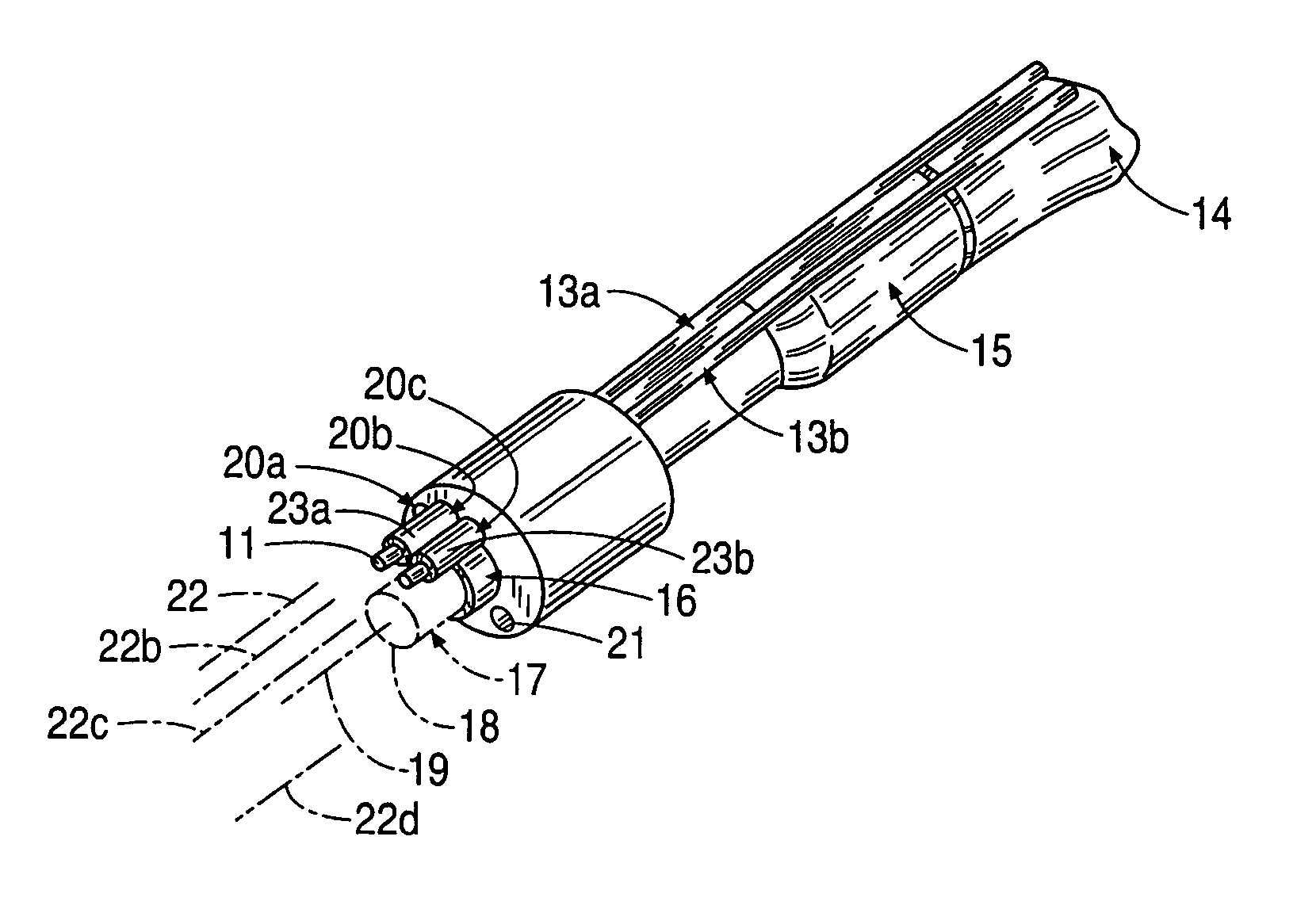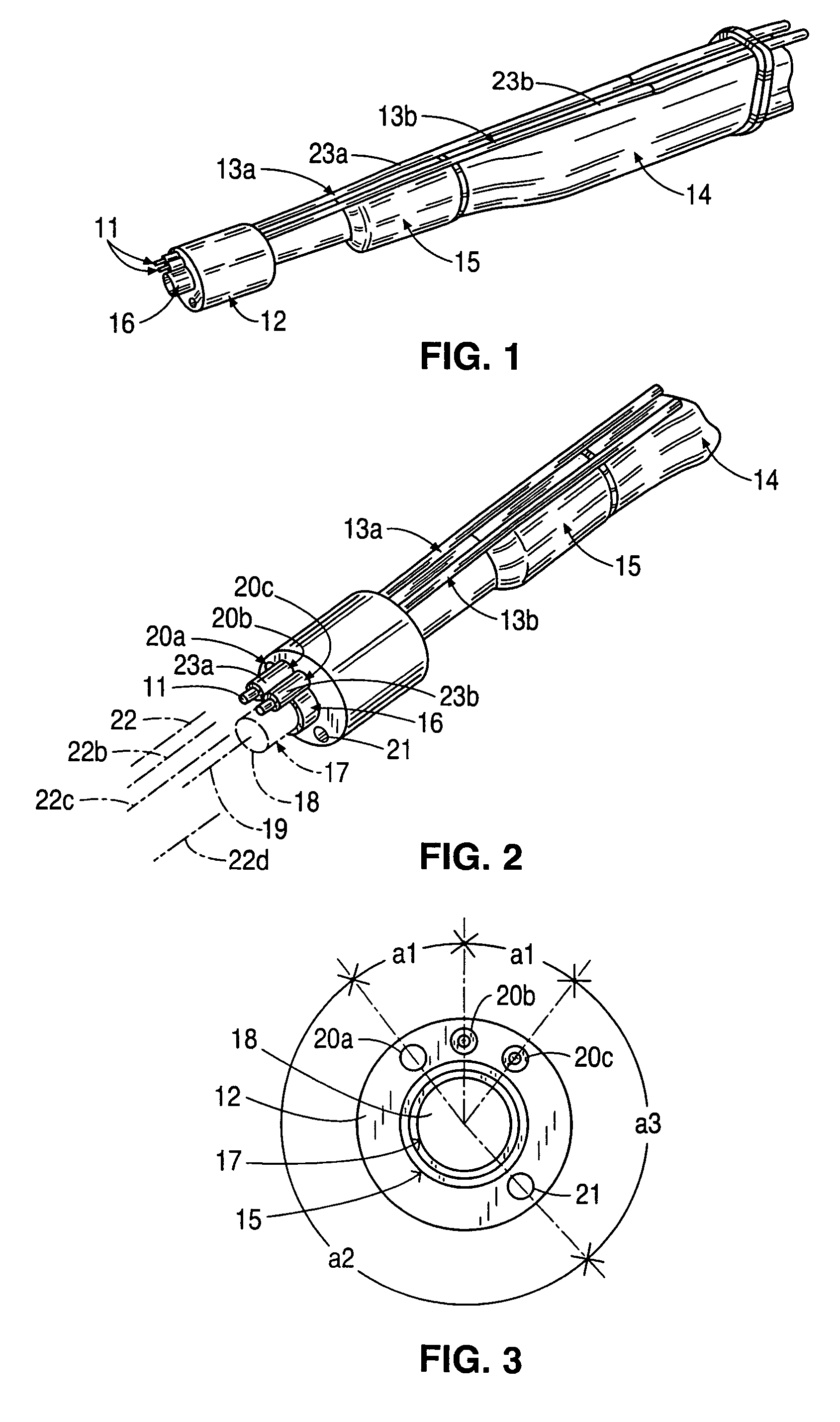RF cauterization and ultrasonic ablation instrument with multi-hole collar and electrode mounting sleeve
a multi-hole collar and electrode mounting technology, applied in the field of ultrasonic tissue ablation instruments and ultrasonic medical treatment devices with electrocautery, can solve the problems of reducing affecting the safety of patients, so as to reduce the risk of patients, reduce the risk of bleeding, and ensure the cauterization effect.
- Summary
- Abstract
- Description
- Claims
- Application Information
AI Technical Summary
Benefits of technology
Problems solved by technology
Method used
Image
Examples
Embodiment Construction
[0036]As depicted in the drawings, a bipolar RF cauterization and ultrasonic ablation instrument comprises an elongate probe 17, a sleeve 15, a sleeve extension 12 and two cauterization electrodes 13a and 13b. Probe 17 is an ultrasonic element, serving to convey ultrasonic vibrations (as standing waves) to organic tissues at a surgical site. The ultrasonic mechanical vibrations are generated by a piezoelectric transducer (not shown) such as that disclosed in U.S. Pat. No. 5,371,429, the disclosure of which is hereby incorporated by reference. The transducer is disposed in a handpiece casing 14 to which probe 17 and sleeve 15 are mounted.
[0037]Probe 17 has a working vibration tip 18 and a longitudinal axis 19. Sleeve 15 surrounds probe 17 and defines of central channel or aperture (not designated) receiving the probe, with working probe tip 18 projecting from a distal or free end 16 of the sleeve. Sleeve extension 12 takes the form of a collar, diametrically larger than sleeve 15, th...
PUM
 Login to View More
Login to View More Abstract
Description
Claims
Application Information
 Login to View More
Login to View More - R&D
- Intellectual Property
- Life Sciences
- Materials
- Tech Scout
- Unparalleled Data Quality
- Higher Quality Content
- 60% Fewer Hallucinations
Browse by: Latest US Patents, China's latest patents, Technical Efficacy Thesaurus, Application Domain, Technology Topic, Popular Technical Reports.
© 2025 PatSnap. All rights reserved.Legal|Privacy policy|Modern Slavery Act Transparency Statement|Sitemap|About US| Contact US: help@patsnap.com


